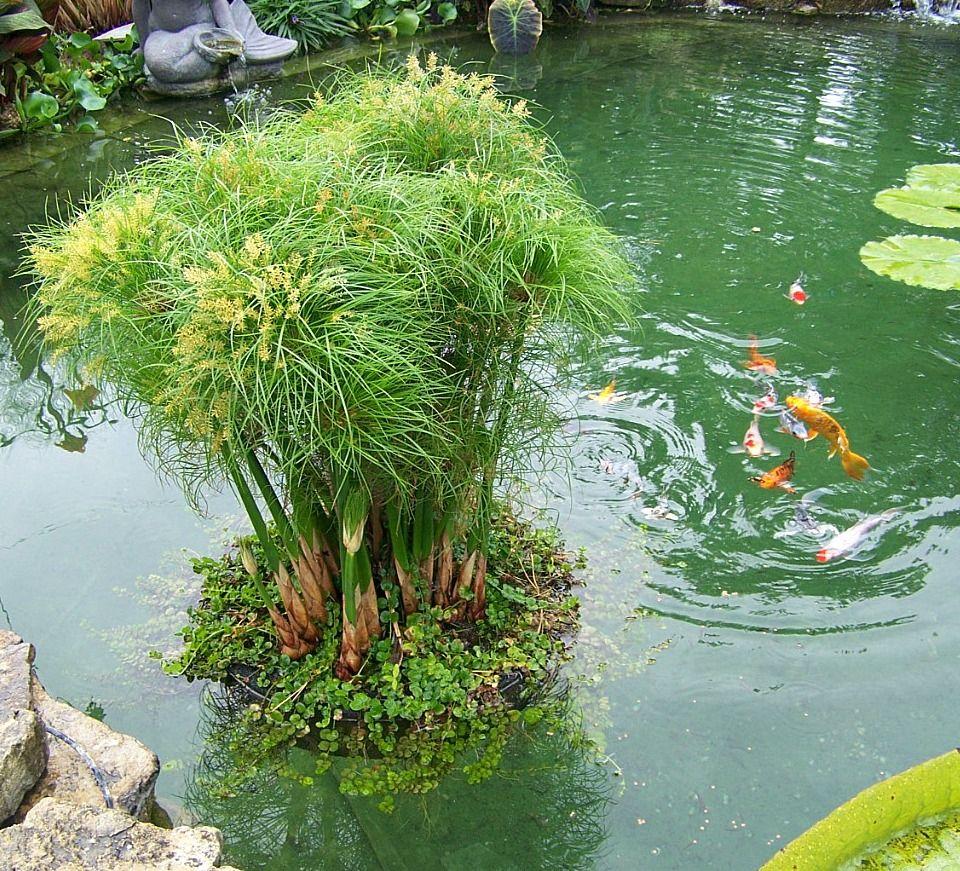Organising Pond Plants
Most pond plants are really easy to maintain, requiring occasional encouragement to look great. However, if you pick a plant that grows rapidly, it may require a lot of maintenance, like cutting it back.
Managing and organising a pond can be tricky; but the secret is to choose a variety of floating and/or submerged plants. But not just any plants; only choose the ones that are compatible with your pond size. Marginal plants provide the finishing touch and an adjacent bog-garden should be viewed as optional.

You should pant sufficient floating plants which can cover approximately 20-50% of the surface area of your pond. The leaves will provide much needed shade in the summer, which can control the development of algae (i.e. the dreaded green water!). These kind of plants include waterlillies, so you don't need many.
In a small pond you will need manageable plants, such as the 'Black Princess' (plum-red blooms) or even the ‘Rose Arey’ (rose-pink flowers). In a really small pond, the ‘Pigmaea Rubra’ is a beautiful addition with its wonderful starry-red blooms.
The trick here is to use both waterlilies and orderly floaters, like hornwort, water milfoil, water soldier and water hyacinth, but avoid the invasive floating moss (azolla). Underwater plants aerate the water and provide much needed shelter for your fish; allowing them to seek shelter from predators (like Herons) while providing a safe place to lay their eggs. One of our favourites is the water violet; which floats to the surface as it blooms – producing attractive lilac flowers.
If you are looking for a quick way to add Oxygen into your pond, our Elodea Densa's are quick to grow and provide plenty of extra aeration. Or, you may enjoy our mixed variety packs; these come with 6 random plants provided by our supplier and they can contribute to a vibrant, flourishing pond.
.jpg)
In the shallows along the edge of a pond you can combine different flowering plants that like to have their roots wet. If you take into account their flowering times, you will be able to have colour and interest throughout the summer. In deeper water you can include delights such as the sweetly fragrant water hawthorn with exotic-looking, orchid-like flowers.
Planting pond plants
In ponds with liners, marginal plants should be planted in planting baskets. It is also important to use aquatic soil, which releases nutrients slowly – this prevents excess nutrients leaching into the water, helping to prevent green water problems. Follow the below tips to successfully pot your plants:
- Position the aquatic plant so that it is at the same depth in the platning basket as it was in its pot, then top up with aquatic compost and firm.
- Cover the surface of the compost with a layer of gravel. This keeps the compost in the basket and prevents aquatic creatures from disturbing it.
- Transfer the platning basket onto the marginal shelf of your pond.
Deep-water plants
Unless you own a pair of waders, positioning deep-water plants can be tricky. One method of doing so is to thread a couple of long cords through the mesh sides of the aquatic container. Then, with the help of a willing bystander, lift the plant and container by pulling the cords taught between you. Carefully move the basket into position and remove the cords.

Stand new waterlilies on bricks so that their leaves are just below the surface. Then, as the leaf stalks elongate, gradually lower the basket by removing bricks one at a time until the basket is on the floor of the pond. The other option is a bit more drastic; trim off the mature leaves and position the basket directly on the floor of the pond. The new leaves will then eventually grow up to the surface.
If you have any queries, please contact us.